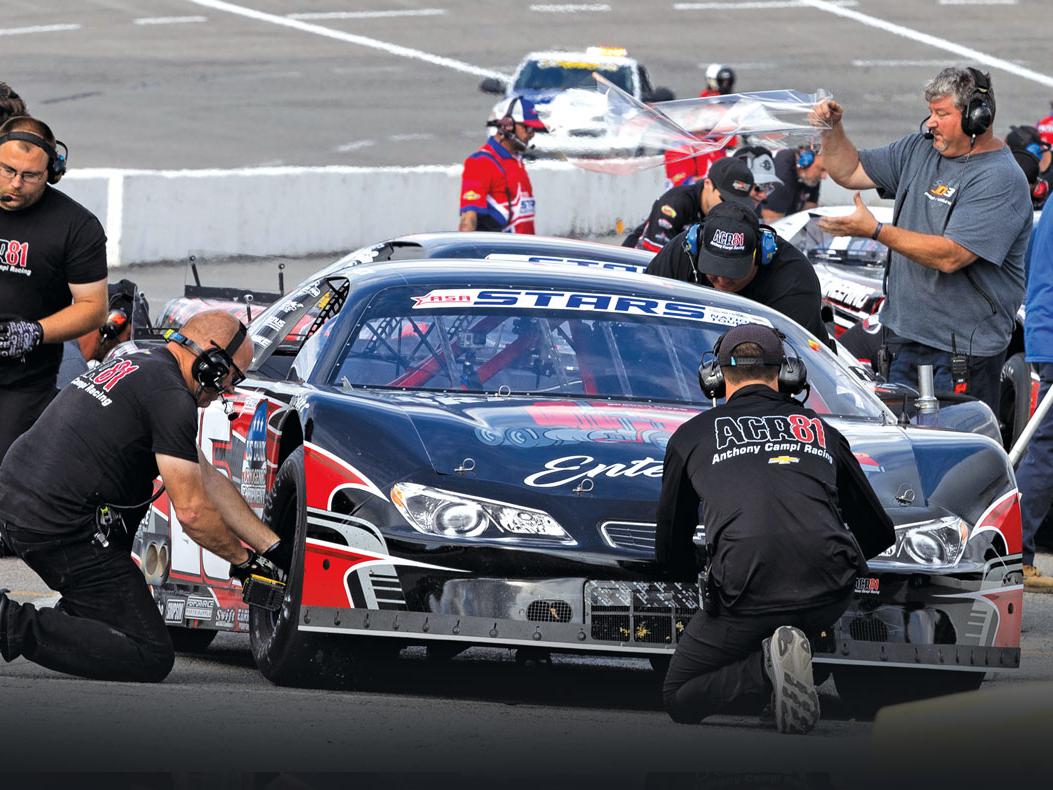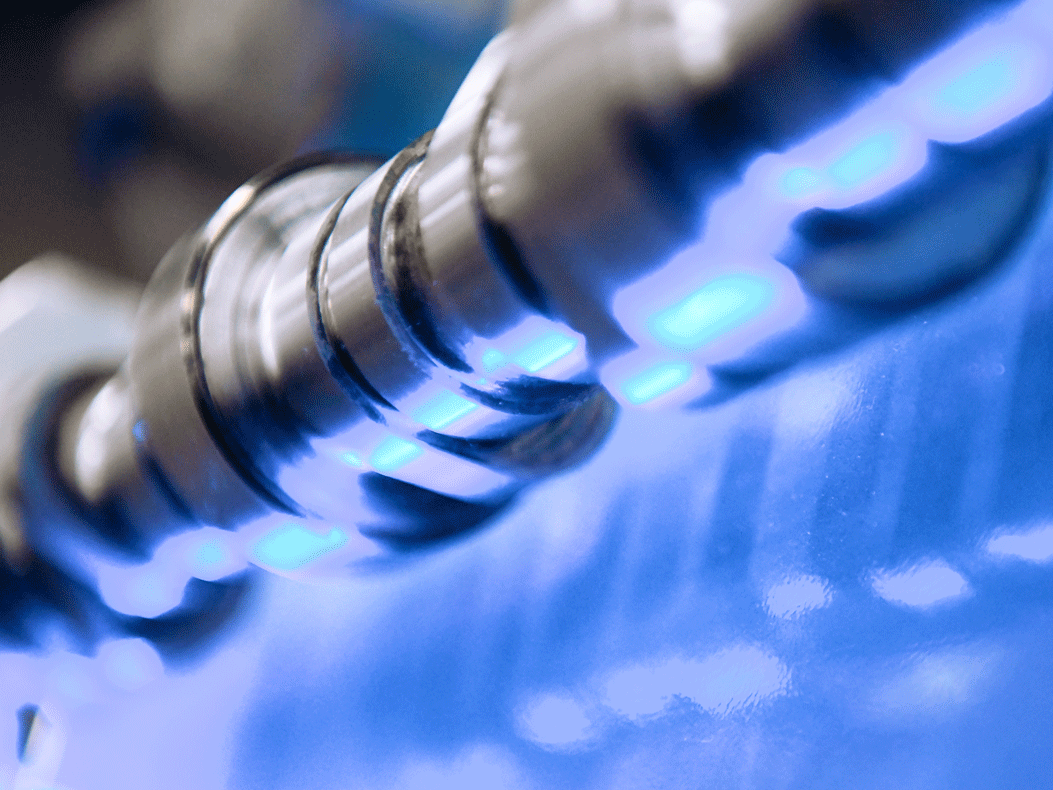Safety First
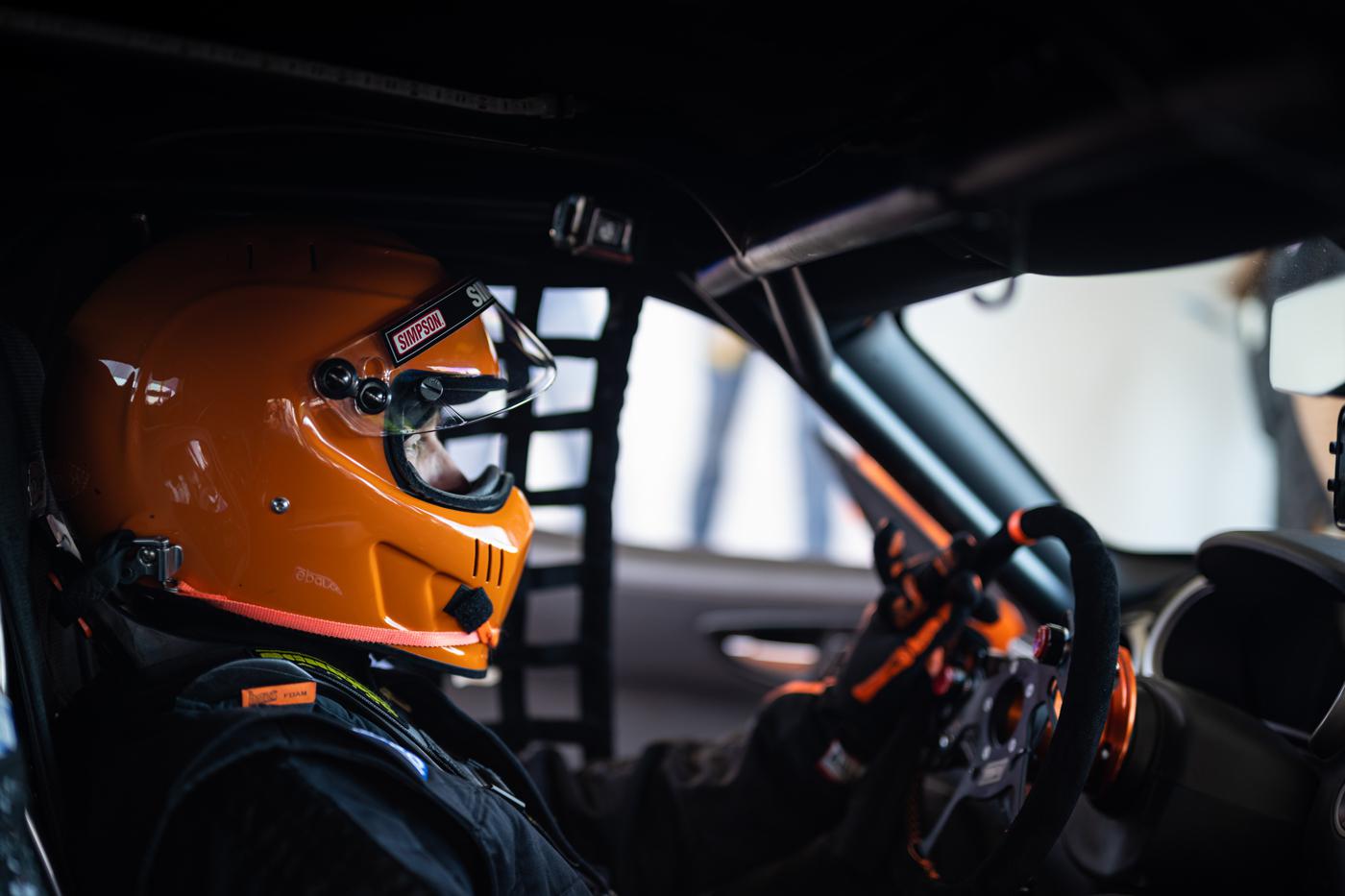
Industry experts reveal when helmets, fire suits, and other pieces of critical protective gear should be replaced. Hint: It doesn’t always align with expiration dates.
Nothing lasts forever, as the old saying goes, and that’s especially true when it comes to driver safety gear. Helmets, fire-retardant clothing, and head-and-neck restraints can all lose their ability to protect the racer—even if they still appear to be in good condition—due to factors that range from simple wear to outright damage. Race sanctioning bodies and safety organizations, including the FIA, SFI, and the Snell Memorial Foundation, set standards for protective equipment and also establish replacement and/or inspection timeframes for certain items.
Determining when to replace safety gear “can be tricky, as they have different levels of protection, and some don’t have required replacement dates,” said Carrie Willhoff of Racechick, Woodland, California. “Many people go to the rulebooks of their sanctioning bodies as a good start, but just because they may not have guidance with replacement dates doesn’t mean they are still good. For example, NHRA doesn’t require recertification on anything below an SFI 3.2A/15 fire suit. Does that mean that the lesser protections will last forever? Absolutely not.”
Helmets
“There are two homologating bodies on helmets—the Snell Memorial Foundation and FIA,” explained Jacob Brown of K1 RaceGear, Carlsbad, California. Each body sets its own helmet ratings periods. “FIA changes ratings whenever it deems necessary, with the last rating change in 2018 on the 8860.” Snell comes out with a new rating every five years. “We are currently in a Snell 2020 cycle, which came out in October of that year, and it will cycle again in October 2025.”
When Snell makes an update, “it makes changes to make the helmet safer, but a helmet is good for 10 years from the issuance of the Snell date,” said Brian Prior of Holley, Bowling Green, Kentucky, which has HANS, RaceQuip, Simpson, and Stilo safety equipment brands under its umbrella. That means today’s Snell 2020 helmets “are actually good until 2030. That’s not saying you won’t want to look at a 2025 helmet if you have the liberty to upgrade and see what the new safety standards and protocols are. If you have the ability, naturally you’ll want to go up to the next Snell cycle.”
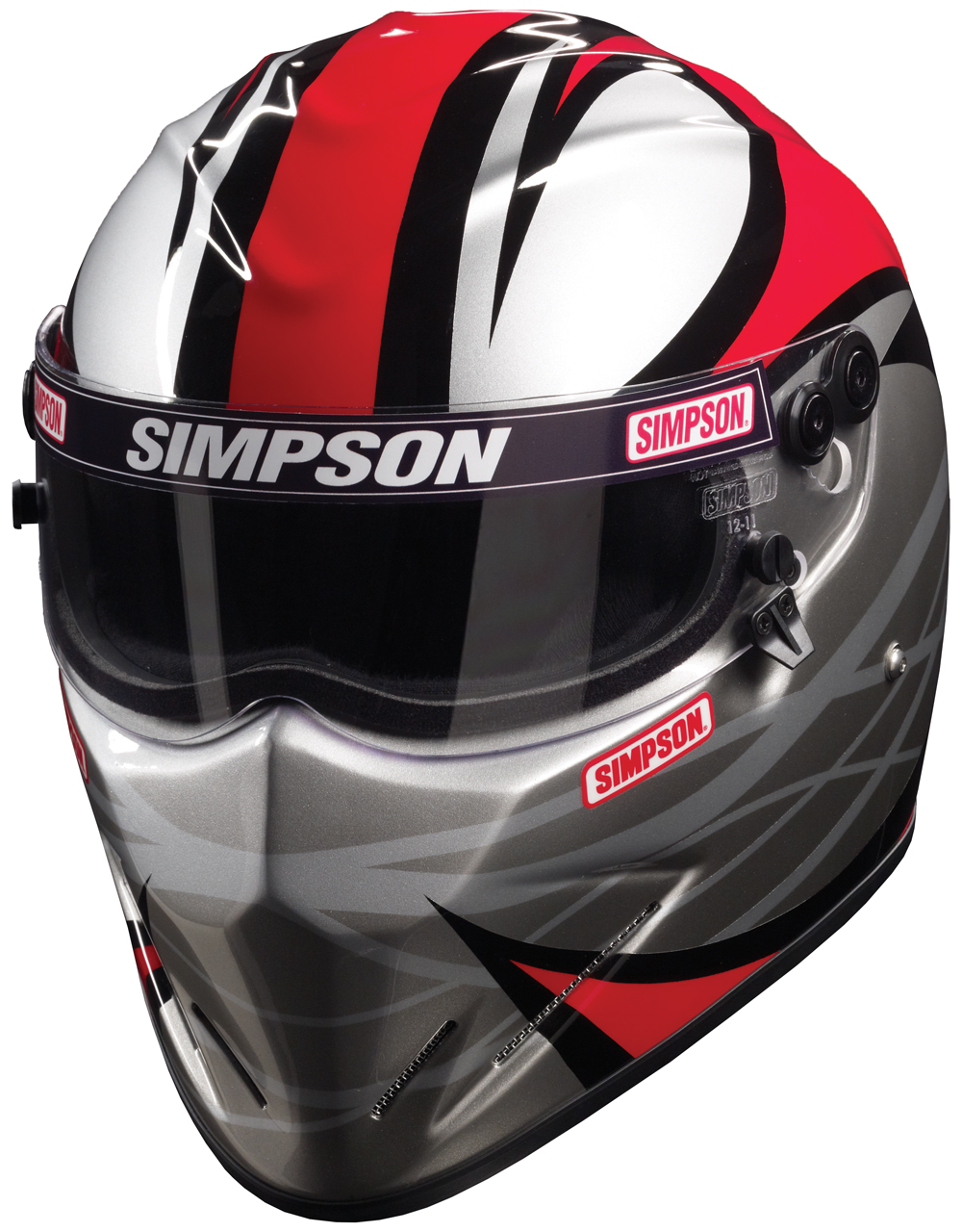
“Standards always change and evolve,” observed Kyle Kietzmann of Bell Racing USA, Miami, Florida. “For example, the FIA 8860-ABP standard has added ballistic protection in the front of the helmet to prevent penetration for open wheel-type forms of racing like F1. There are new standards for safety equipment issued by SFI and FIA every five to 10 years. These standards change over time, providing an opportunity for people to upgrade their equipment to take advantage of the latest advances in technology, materials, and construction techniques.”
Beyond these rules, though, other circumstances play into the timing of a helmet replacement.
“If you have a racing accident and take an impact on the helmet, make sure you do a visual inspection of the helmet to see if there’s any evidence of cracking in the shell or delamination, or any compression of the inner liner and the energy absorbing foam,” Kietzmann said. “If the helmet is damaged, replace it. If you lose consciousness in an accident, we recommend that you replace the helmet even if it appears that there’s no visual issues with the product. That’s one circumstance where the helmet could still be within the proper Snell or FIA date range, but you would want to replace it.”
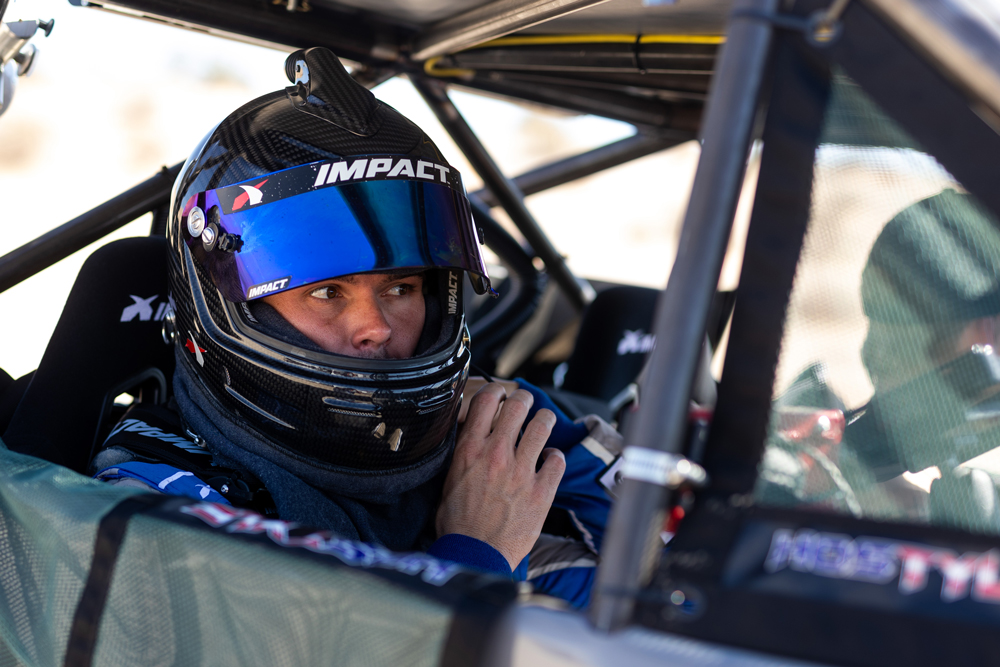
“After any type of impact on a helmet, you would want to get it inspected,” said Prior, which most helmet companies will do free of charge. “We understand that sometimes financially-wise you may have that helmet inspected in hopes that you can reuse it, but ideally after especially a firm impact—a crash, a rollover, something of that nature—you would want to replace it. Once the EPS [expanded polystyrene] liner takes an impact, it’s going to compress to a certain extent.” That liner, he said, is “a large portion of the construction of the helmet—what lies between the driver’s head and the exterior shell of the helmet. That’s where the protection factor lies.”
It may not take what these companies euphemistically call “an event” to prompt a new helmet purchase. “If you have a good quality helmet, and it’s worn 20 times in a year, you look at that helmet and it doesn’t look good anymore,” explained Danilo Oliveira of G-Force Racing Gear, Acworth, Georgia. “The cushions are not good and it’s not even comfortable anymore. After some time, the cushions give up a little bit. So it’s not as tight as it was before. Why are you still wearing it?”
“We recommend replacing a helmet every three to five years,” Kietzmann said, “just because of normal wear and tear. Materials and components can break down over time.”
According to Brown, “the rule of thumb is you usually replace your helmet every two to three years if racing extensively, three to five if not racing on a full-time basis. It’s based on how often the helmet is used, and that’s not taking into account any crashes or drops.”
Environmental factors come into play as well. “In drag racing and in road racing there’s not a lot of wear and tear on a helmet since you’re dealing with a cleaner environment versus off-road,” said Ben O’Connor of Impact Racing, Indianapolis, Indiana. Off-road and dirt oval racing can be “a very hostile environment in some cases, and the need to replace equipment could be much sooner, particularly if there’s damage to the helmet due to rocks, mud, debris, things of that nature. If a rock hit was big enough to take a chip out of the base material of the helmet, you should replace it, or at least send it back to the manufacturer to have it inspected.”
Head-and-Neck Restraints
Head-and-neck restraints are “up for inspection every five years,” O’Connor said. “That’s the SFI recommendation, and most sanctioning bodies have adopted that.” He pointed out that “most devices are carbon-impregnated poly or something of that nature. They’re pretty darn strong and will last for quite a while.” The inspections, then, are to “make sure the tethers, soft goods, and fasteners are in good shape. If you see a tether that’s fraying, get that replaced. That is the lifeblood of the device. You don’t want your tether breaking in an event. Make sure the hardware is in good shape as well.”
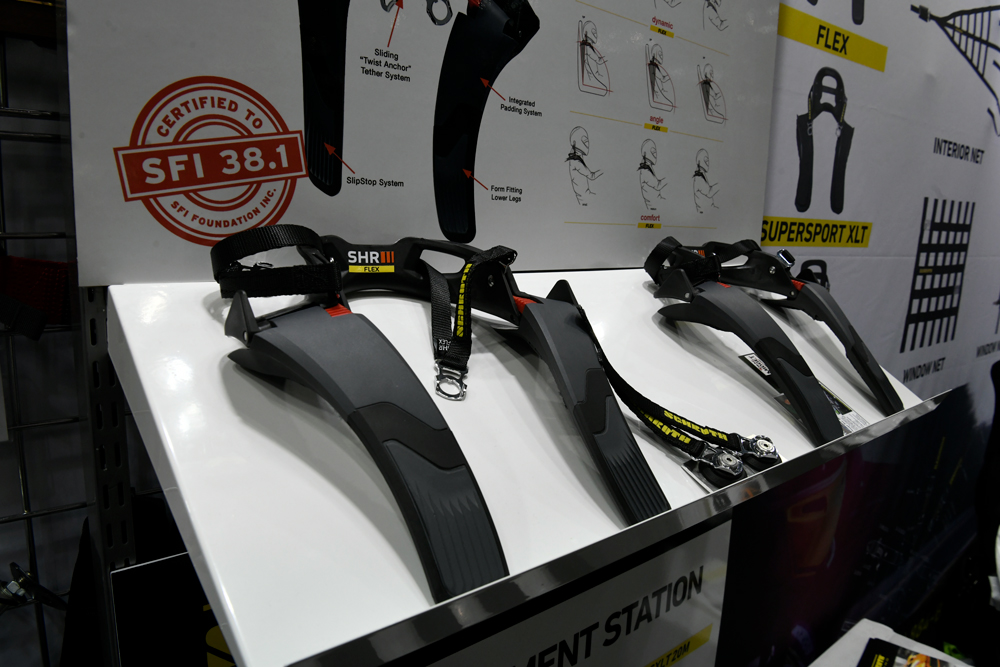
“The only things that can be recertified with us are the HANS and hybrid devices,” Prior said. “Those are good for five years, and those can be sent back to Simpson to be recertified.”
Fire-Retardant Clothing
The replacement rules for fire suits aren’t as cut-and-dried as they are for helmets. They vary based on the suit’s level of protection.
SFI-15 and SFI-20 fire suits have to be inspected and retagged after five years. “Some of the things we would look for in those suits are rips, tears, and issues with the stitching,” said O’Connor. “Contamination would be cause for us to not recertify a suit or need to do repairs on the suit before it can be retagged. There’s no limitation on how many times a suit can be retagged by SFI, but we tend to limit that to one recertification. We feel that after 10 years, you really should replace the suit.”
There are no time limitations on the commonly used SFI-1 or SFI-5 suits. The same holds true for fire-retardant shoes and gloves. The decision to replace, then, is based on a number of factors.
“If you are in a fire, the suit needs to be replaced. It’s a one-time-use thing,” emphasized John Gentry of Stroud Safety, Oklahoma City, Oklahoma.
For Willhoff, the number-one deciding factor is fit. “The safest fire suit is one that fits the body well. Any time people gain or lose weight would be a time to determine if your suit still fits well. If you have gained weight, are you still comfortable in the seat with it on, or are you stressing the seams? If you’ve lost weight, a suit that is too bulky or has excess material is a liability, as it can get caught on pedals, roll cages, or any other edge when trying to exit the car in a hurry.
“Any opening on the suit can provide the risk of an air entry between the body and outside, which is a pathway for fire, so pay special attention to the neck opening as well as the cuffs on arms and legs,” she added. “Women shouldn’t wear men’s suits, as oftentimes the neck is too large and the shoulder seams lay lower across the bicep, which limits mobility and range of motion.”
On the subject of openings, “do you see any seams that are unravelling?” Willhoff asked. “If there are any punctures, rips, or tears, the suit should be replaced, as it could provide a pathway of fire to the body.”
“If you do tear a suit, you certainly should get it fixed in a timely manner,” advised Brown. “Send it back to us. That way we’re using the proper fire-retardant thread to put it together.”
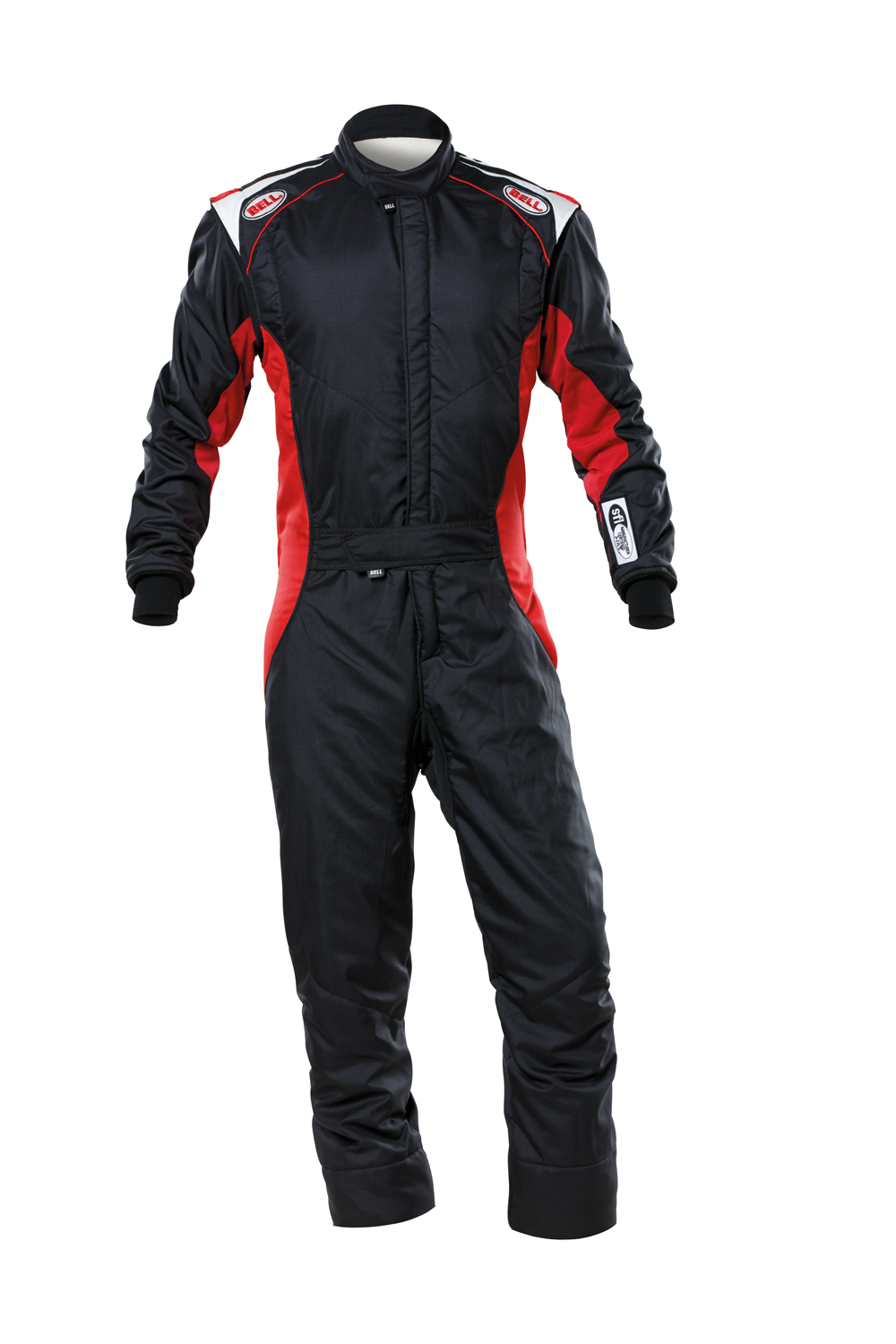
Chemical exposure, especially to flammable materials, can impact a suit’s flame retardancy. “You see guys who wear them like mechanic’s overalls working on things,” Prior said. “I can understand that when you’re in a time crunch, working between heats. But ideally you want to keep that suit as pristine as possible. They’re going to get dirty. They’re going to get beat up. That’s fine, but when you get into chemicals—oil, fuel, anything like that—you just turned your most important piece of protective equipment into a wick, basically.”
To keep it clean, “we recommend a suit is dry cleaned with non-petroleum-based solvents,” explained Prior. “It’s very important when a racer takes a suit to a dry cleaner to request that it truly be dry cleaned and not laundered.”
The Proban material used in some SFI-1 suits is a “cotton-treated-type layup, and it’s possible under certain circumstances to wash some of that treatment out if you’re not careful about how you clean the garment,” O’Connor said. “Nomex or Aramid-based fabrics are going to have a natural inherent fire resistance to them, so there’s not as much of a concern of washing that treatment out because there’s no treatment on the fabric. However, over time the fabric itself can still break down, and that changes the characteristics of the fabric.”
Fire suit material “will get thin over time,” said Stroud Safety’s Tommy Cunningham. “Areas that you use in a race car—your bendable joints, elbows, knees, waist area where your belts come across, everywhere there’s a constant wear—every time you suit up and strap in, it’s getting a little abrasion. Friction will cause wear faster than normal. If you wear the material thin, or make a hole in spots, there’s less protection in those areas.”
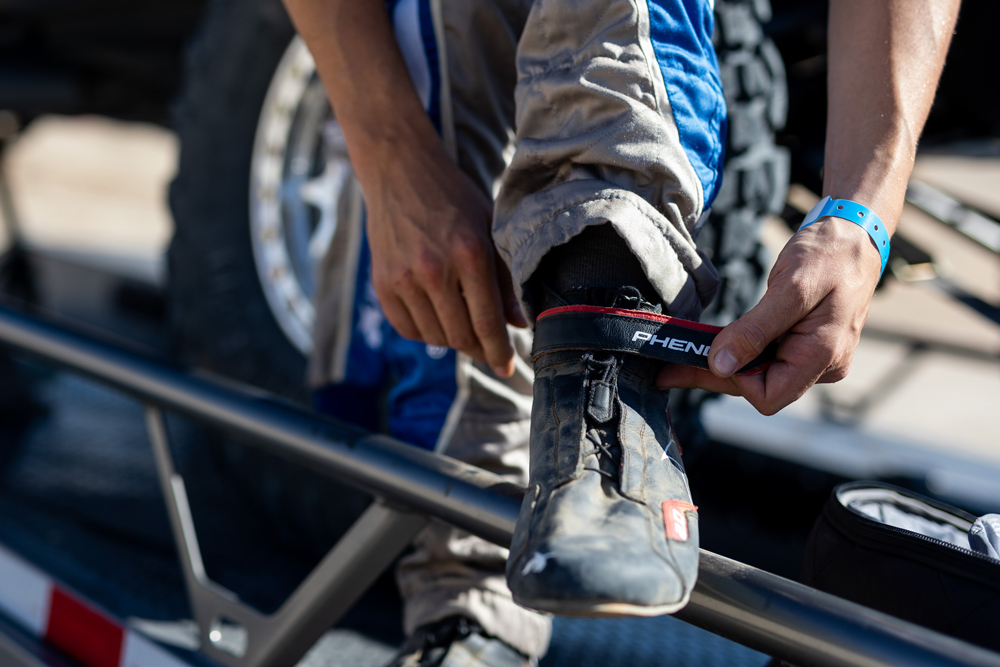
“Replacement should be based on how much the suit is used,” Oliveira said. “The guy who cleans his suit once a month because he’s racing every other week should be looking for a suit sooner than the guy who raced three times a year.”
The Proban or treated FR cotton commonly found in SFI-1 suits “will lose its fire retardancy over time as you continue to wash it, wear it, and move around,” Brown said. Nomex, by comparison, “will break down, the actual fire retardancy will decrease, but it will never go away.” For that reason, Brown recommends Proban or FR cotton suits be replaced “yearly, or at the absolute most every two years if they haven’t been worn that much.”
Annual replacement was the shortest timeframe we heard from any of the representatives. Most recommended suit replacement after anywhere from two to five years, depending on its condition, how often it was worn, and all the other factors mentioned above.
Similar recommendations came up when discussing accessories. “Shoes and gloves should be replaced every two years, unless you wear a hole in them,” Prior said. “Driving shoes are designed for driving, but we wear those things everywhere. That just wears the soles out quicker.”
“I saw a guy, a pro or semi-pro driver, walking on the track with a shoe that was almost falling apart,” Oliveira explained. “I asked him, ‘Why do you still have that shoe?’ He said, ‘I just don’t feel like putting money into shoes. I only have two more races this season.’ I said, ‘Man, you shouldn’t have been wearing this a month ago. You still have two more races? Come on, buy the shoes and wear them next year. You still have next year to race.’ There has to be a balance of common sense and what you’re allowed to wear.”
“Safety comes down to common sense,” Brown added. “You have to take care of yourself more than anything. You can buy the fastest motor, the best tires, the best chassis, but if you get hurt racing, you can’t replace yourself. You’re given one head, one body. We’re always going to do what it takes to go faster, to get that extra tenth, but common sense needs to kick in. You need to spend money on proper safety gear. You need to replace it every so often. You’re getting motors rebuilt every 12 to 15 races, let’s get the suits redone every 40 to 50 races. That’s extreme, but look at the money you’re spending on the car versus what you’re spending to be safe to race. Safety is usually an afterthought, and it shouldn’t be.”
Steering Clear Of Counterfeit Gear
Top quality safety gear is not inexpensive, so it makes sense that a racer on a budget would look for deals when it’s time to add or replace a piece of equipment. A deal that’s too good, though, usually means the gear isn’t what the racer thinks it is.
“Pop-up suit companies selling suits for pennies on the dollar compared to your more reputable brands is a very appealing thing,” admitted Jacob Brown of K1 RaceGear, Carlsbad, California. “People don’t want to spend a lot of money on safety gear, but usually the old adage ‘you get what you pay for’ typically rings true.” A suit selling far below regular market value “usually means the material is not what they say it is. It’s not going to keep you safe in case of an accident.”
“The SFI Foundation and FIA do rigorous testing for the racing safety companies to make sure that the materials hold up to the standards required to have their certification,” noted Carrie Willhoff of Racechick, Woodland, California. Looking for an SFI label or FIA hologram on the gear will usually ensure the racer is getting authentic equipment. But there was a recent spate of SFI labels being counterfeited, and “the embroidered fake SFI labels look pretty darn close to the real thing,” Willhoff said.
To avoid being scammed, racers should do their homework before buying. “Research the company on the SFI Foundation list of approved manufacturers, which can be found on its website (sfifoundation.com), and always buy through the approved manufacturer directly or one of its distributors,” Willhoff said. “I know it’s tempting to get ‘the deal’ on eBay or buying from other channels, but it’s imperative that people know exactly what they are getting by going straight to the approved manufacturer.”
When buying a helmet, “the Snell website (smf.org) has a listing of all helmets that meet its certification,” said Ben O’Connor of Impact Racing, Indianapolis, Indiana. “Look at the Snell decal and make sure it matches the packaging, because it’s labeled inside the helmet as well as on the packaging itself.” If a racer is still in doubt, contact the manufacturer. “There are ways they can identify their helmet, either through the Snell labels or just looking at the product. We would know instantly if we turned the helmet over and looked at the interior, because there are certain pieces of the hardware that are very specific to us.”
The safest thing, O’Connor said, is to “buy direct from the manufacturer or through a well-known dealer. The places to avoid are large e-commerce sites that are open platforms anybody can sell through. If somebody’s counterfeiting something, that’s where you’re going to find it.”
That doesn’t mean Internet retailers like eBay and Amazon aren’t legitimate sources of safety gear, said Danilo Oliveira of G-Force Racing Gear, Acworth, Georgia. “We are on eBay; we are on Amazon. If you want to buy from eBay, buy from official stores that are on eBay, not from any one seller on eBay.”
Determining whether a safety equipment retailer is legitimate “isn’t that hard,” Oliveira said. “Do they have social media? Google can tell you how many reviews they have, how long they’ve been in business. If you look at G-Force, it’s 25-plus years. Look for one of our dealers, like Summit, you’ll see that they sell billions of part numbers.
“The ones who can stop fake products are not the police or the manufacturers, not SFI or FIA,” he added. “We can’t. It’s impossible. The ones who can stop it are the consumers.” —Drew Hardin
SOURCES
Bell Racing USA
bellracing.com
G-Force Racing Gear
gforce.com
HANS Performance Products
hansdevice.com
Impact Racing
impactraceproducts.com
K1 RaceGear
k1racegear.com
Racechick
racechick.com
RaceQuip
holley.com/brands/racequip/
Simpson Performance Products
simpsonraceproducts.com
Stilo
simpsonraceproducts.com/stilo-racing-helmets
Stroud Safety
stroudsafety.com
 MEMBERSHIP LOGIN
MEMBERSHIP LOGIN JOIN PRI
JOIN PRI
